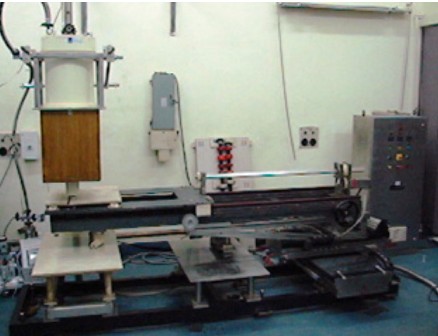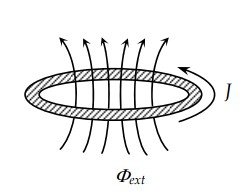The super conductivity device for detecting magnetic field change (S.Q.U.I.D)
There is this very close friend do mine who has pains in his tooth which seemed to happen more frequently. Whenever he has this ache he would lie on the bed holding together his leg in a crayfish position.
He wouldn’t be able to talk.
Most of the time he gets a mirror to have a look at the tooth that is rendering his day almost useless he knows the tooth so it makes it easier but what surprises me is the fact that he sees nothing, and I also see nothing when I try to have a look at what exactly is wrong with him.
It pains me when I see him in this mood although he is one troublesome fellow.
But this thing has made me wonder how dentists manage to see or diagnose what is wrong with their patients. I for sure know they use x-rays to check for things they cannot see.
But the way my friend is pained, and he is having an invisible defect in his tooth do you know this is the same way certain materials are also defective and could only be seen with special test equipment’s used by a material engineer.
This explains why some metals like cast steel could look okay one minute and fall during transport and they just break into two. Naturally, these metals could be so defective, and your eyes wouldn’t just see them whereas your material or mechanical equipment could tell you it has a crack.
This has lead me to discuss what some tests are.
Non-destructive tests
Non-destructive tests are known to be called NDT by numerous people. They are series of tests carried out by scientists, technicians, and engineers to have a look or analyze the properties of materials without having to damage the material.
This form of test is usually costly but saves a lot in value and time in the long run. The non-destructive testing is applied in several engineering fields such as forensic engineering, mechanical engineering, systems engineering, civil engineering, petroleum engineering, medicine, art. The impact of non-destructive testing in the medical field such as echocardiography, medical ultrasonography also digital radiography. You could read more about non-destructive testing here by @temitayo-pelumi.

Image of the SQUID NDT device from Nondestructive Testing Methods and New Applications
Edited by Mohammed Omar
Published by InTech
Janeza Trdine 9, 51000 Rijeka, Croatia. under CCO license 3.0
The SQUID sensor
SQUID is an acronym for superconducting quantum interference device. (Yes, that sounds complex right?) quite simple though I also have little knowledge about quantum physics, yet I could understand it.
SQUID is the most sensitive device or tool used to detect or spot a change in magnetic field. And it has been known for quite some time that the superconducting quantum interference device is the most sensitive instruments for the measurement of change in magnetic flux and its application in non-destructive testing is highly welcomed and seen as an improvement. It can offer a wide range of frequency response of up to 10kHz which are important to how the NDT works with low current since the low-frequency electromagnetic field has large skin depth and can penetrate deep through conductors.
Squids are used in laboratories to detect ferromagnetic rods, plates, corrosion in pipes, and naval mines. Squid is capable of working in some noisy environment without electromagnetic shielding. Although it has not been commercially available to use as it is very much expensive.
Due to the conventional eddy current technique which can detect defects in materials up to certain depth under the surface of a conducting specimen placed on the investigation. The eddy current technique has a flaw of detecting only subsurface defect in a material.
This limitation in the eddy current technique can be overcome by the use of highly sensitive squid sensor called squid. Non-destructive evaluation has been proposed with its potential demonstrated in the past two decades.
How does SQUID work?
The SQUID sensor basically is made up of a superconducting ring and two superconducting junctions. The superconducting ring allows a certain flux (magnetic) value in its center. The penetration of the field in the ring (magnetic field) is quantized and is an integer multiple of the flux quantum. In squid, the situation is tenuous because of the junctions and each junction allow a small electric current to pass through by the Josephson effect which is also very sensitive to the magnetic field in this ring.

Image of the Flux quantization SQUID NDT device from Nondestructive Testing Methods and New Applications
Edited by Mohammed Omar
Published by InTech
Janeza Trdine 9, 51000 Rijeka, Croatia. under CCO license 3.0
The potential difference (volts) of SQUID will be different when the magnetic flux is applied and its value returns to the same value as the additional flux quantum which goes through the ring. The voltage of the squid is therefore said to be periodic when the magnetic field is applied to the ring, and the period of this effect is known as the flux quantum.
If this variation is measured, the number of flux quantum that flows through the ring can be measured when it comes close to a magnetic field. The squid is so sensitive that can measure these variations and up to a millionth of the flux quantum can be detected. The frail value of the flux quantum gives an explanation as to why squids are the most sensitive systems used for measurements in magnetic fields.
Applications of SQUID
The squids are applied where accurate measurements are required in magnetic fields. The neurologists use the squid technology to detect the magnetic field created by the brain neuronal activity. The process is called magnetoencephalography.
The physicists also use the squid to measure the magnetic properties of the compounds they study this accurate measurement of the magnetism in compounds enables them to understand better, the behavior of the compound's electrons.
The squids are used to understand new superconductors. They are used by geologists, archeologists, and engineers.
Conclusion
Squid is an acronym for the superconducting quantum interference device which is known for its high sensitivity in magnetic fields. They are now applied in non-destructive testing due to their ability to penetrate deep beyond subsurface defects. Slight changes in magnetic fields are now being detected using this amazing technology which is now being used to understand how certain components work.
The squid has wonderful applications in certain engineering medical and industrial fields although it is quite expensive and could not be found everywhere.
My friend has refused to go for a test I don’t know why but severally I have advised him to go for one. As the x-ray test which is a non-destructive test would be used on him. I would still advise him when next I see him hopefully, he listens this time.
Thanks for reading!
References
For further reading and basis of more SQUID knowledge get these books and follow the links.
1|2|
|3
|4
|Nondestructive Testing Methods and New Applications
Edited by Mohammed Omar
Published by InTech
Janeza Trdine 9, 51000 Rijeka, Croatia
|Non-Destructive Testing (NDT) of Metal Cracks Using a High Tc If-SQUID and Eddy Current Method D. F. Lu, Chang-xin Fan, J.Z. Ruan Midwest Superconductivity Inc. Lawrence, KS 66049 S. G. Han, K. W. Wong, G. F.Sun Department of Physics and Astronomy University of Kansas Lawrence, KS 66045
If you write STEM (Science, Technology, Engineering, and Mathematics) related posts, consider joining #steemSTEM on steemit chat or discord here. If you are from Nigeria, you may want to include the #stemng tag in your post. You can visit this blog by @stemng for more details.



Your friend with a toothache may have a hole in his tooth. So when food is wedged inside the hole, the thing can be excruciating. If it is not too late, the hole can be filled. But if late they can always extract the tooth, and the pain will subside.
Interesting to read about all these tests, I wonder if there is a way to test some things, such as car's tie rod, part of the steering mechanism in a vehicle, which always seems to fail in Honda vehicles.
Dnt worry fam, @Adetola will help us out soon
Lol.. The thing about these stuffs is basically their material and yes there would be enough tests available for getting their materials up to their standard..
Another thing could be that the steering mechanism in honda cars could be very much different from other vehicles even though they look similar to the eye. It could be the cause of failure.
As for my friend with the pain i was guessing he has a hole there even though we can't see it. I have advised him to see the doc.
Thanks for stopping by.
Anything concerning the teeth is always too painful. Even for something to stick up in there it becomes painful.
Yeah.. I found out the hard way from my friend.. He was always lying down in pain.. It was a scary experience.
Well-done... I learnt something new today... SQUID again contribute to the invaluable techniques of Non-destructive tests...
Keep steeming...
Yea the squid is very much precise form of measurement that goes beyond subsurface defects.. Thanks for stopping by.
NDT = testing without breaking
isn't technology not awesome?
Yeah.. Its a test by the way. Many do not value it but engineers know their importance.
crayfish position? Hilarious.
Hehehe... That's how he bends. Thanks for stopping by.
The brain's neuronal activity creates a magnetic field.
I've definitely learned something new.
Well-done sir
Yes it does.. Thanks for having you here.
Yeah, superconductivity and magnetic fields are always seen as rivals and very strong magnetic fields normally destroy the superconducting state... @adetola on this one.👍
Thanks for stopping by.
Always bro
Utilising superconducting quantum interference devices (SQUIDs) – very sensitive contraptions that can measure extremely small changes in magnetic fields.
nice post
Thanks @Saho